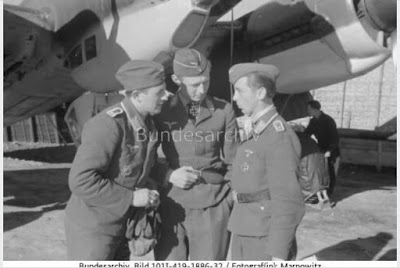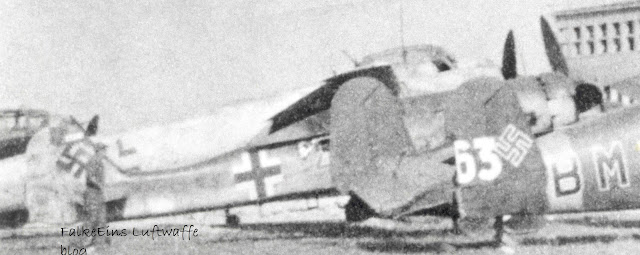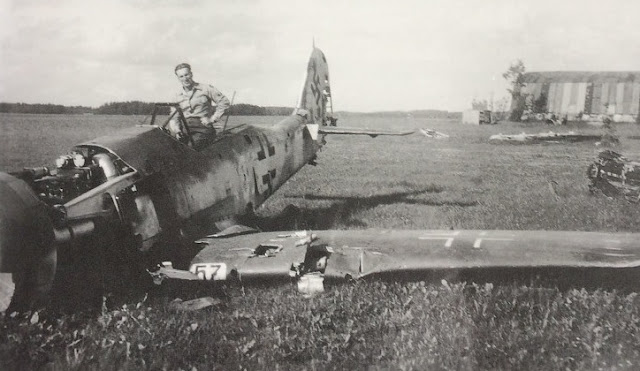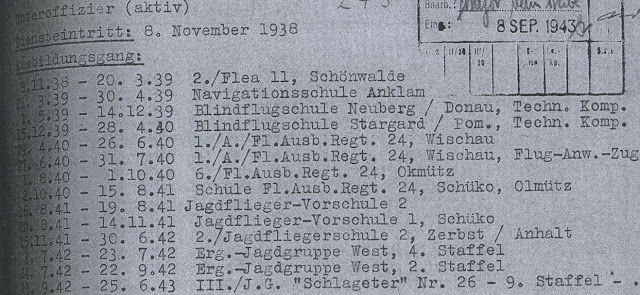
Nearly eighty years ago, on 19 November 1942, the Russians launched a counter-offensive that quickly surrounded the city of Stalingrad, the objective of Hitler's summer 1942 campaign in the East. Trapped inside the resulting 'Kessel' or pocket or were some 300,000 troops of the German 6.Armee and their Allies. Hitler was determined to hold the city and 6. Armee commander Generaloberst Friedrich Paulus waited in vain for a response to his requests for 'freedom of action'. The result was a catastrophe for the Wehrmacht. Just ten weeks later only 91,000 German troops in the pocket were still alive of which just 6,000 men returned from Soviet captivity. The encirclement force -'Operation Uranus' - had comprised three complete Soviet armies, the 1st Guard, the 5th Tank and 21st Army. Outnumbered and poorly equipped, the Rumanian 3. Armee which held the German 6. Armee's northern flank managed to hold on for most of that first day before being shattered. The next day a second Soviet Offensive was launched to the south of Stalingrad against the Rumanian 4. Armee. which collapsed. The tips of the two Soviet pincers quickly met at Kalach-on-Don just to the west of Stalingrad sealing the ring. Immediate German preparations for a 'break-out' to the south-west towards 4. Panzerarmee were well underway when the order 'no withdrawal' arrived. To the north-east of the pocket v. Seylich-Kurzbach (CO L1. Armeekorps) had already authorised his divsions to pull back from their well-constructed winter positions.
While the ground troops fought to 'stabilise' the front - the Russians having been alive to German preparations for withdrawal - German commanders hastily drew up plans to mount an 'airlift'. This 'operation' is the focus of this excellent new account from Robert Forsyth for Osprey. As an 'operation' the story of the airlift has never been 'properly' told in English (Kurowski's 'Luftbrücke Stalingrad' - one of his better works - has not been translated, while both Bergstrom and Hayward focus on the 'Blau' campaign in its entirety). The absence of a 'proper' account in English may be explained by - may even be the result of - viewing the airlift very much as a ‘passive’ operation: that is to say there are no ‘guns blazing’. The much-vaunted 'achievements' of the Luftwaffe fighter aces are only 'represented' at Stalingrad through the efforts of the very small 'airfield protection' unit detached from JG 3 set up at Pitomnik.
Yet, as the author explains in his introduction the story is a 'dynamic' one - the airlift at Stalingrad was played out against a backdrop of appalling weather as the clock ticked down on the poor souls trapped in the ever-shrinking 'pocket' as the airfields at Pitomnik and Gumrak were finally lost, while German commanders vied with each other in ambition, ineptitude ..and recriminations. Wolfram v. Richthofen, the commander of VIII Fliegerkorps - whose diaries and documents form the basis for this book -is particularly dismissive of the 'Sonderstab Milch'- an episode that this reviewer was largely unfamiliar with. Secretary of State GFM Milch was dispatched to Russia in mid-January to 'energise' the airlift but succeeeded only in exasperating the senior commanders - 'too many cooks' - and getting himself seriously injured in a car crash, hit by a Russian locomotive while attempting to drive across a railway line.
The story is also founded to a significant degree on the writings and letters of Martin Fiebig, the Flak general Wolfgang Pickert, the senior Luftwaffe officer in the Kessel awarded the Ritterkreuz for his support of 6.Armee, papers from the Milch Sonderstab, plus the recollections of a senior medical officer of Luftflotte 4, as well as reports prepared by field commanders such as Förster, Kühl and Willers etc. It is a story told very much from the ‘top down’ by the decision-makers rather than from unit-level up. At times they seem almost incapable of processing the magnitude and scale of the task which Hitler had blithely assigned them. Why were combat aircrat able to take off and the transports not? Because the bigger machines had to be dug out of the snowdrifts with winds blowing at 90 km/h and temperatures at -12°C! Paulus had to dispatch a 'special-envoy' to the 'Wolfschanze' to explain, among other things that the figures for aircraft being declared 'Kesselklar' and 'Einsatzbereit' bore little relation to the numbers of machines flying into the city. Nobody seemed to realise that the daily requirements of bread alone were forty tons!
Earlier in 1942 the 'successful' resupply efforts mounted at Demyansk and Cholm had set 'dangerous precedents' (chapter 2) and expectations for this type of 'operation'. Encircled German armies had been kept largely resupplied from the air. But as the author describes, air transport and the resupply of far-flung armies " had become something of a blind spot in Luftwaffe operational thinking". Indeed the Luftwaffe's transport force had no autonomous command and no functional or operational infrastructure. It was an indication of how ill-prepared the Luftwaffe was for war that, in order to optimise usage, the Junkers Ju 52 served both in the air transport and bomber pilot training roles. Blitzkrieg meant short rapid offensives but as the Wehrmacht's campaigns became more drawn out and the Germans suffered their first reverses "the transport side of the system began to break down.." as the allocation of transports to the various Luftflotten became insufficient for the demands placed upon them. To some, the efforts of He 111 bomber crews in dropping containers of bread at Demyansk and Cholm had taken on the appearance of an 'humanitarian relief effort' rather than demonstrating any serious air transport capability. The fact is the Ju 52 transport force did not have enough stowage capacity and was under immense strain - elsewhere the Germans in North Africa were just a few months away from capitulation because of logistics.. Indeed production of the Ju 52 had been cut right back in favour of the development of newer types just at the wrong time- pressing Heinkel bombers into service as transports might boost the numbers of aircraft committed to an operation but not necessarily its effectiveness. Similarly the author makes the point that without their own command even the higest-ranking transport officers were merely the recipient of orders from elsewhere and rarely consulted as to the feasibility of large scale transport operations.
The same scenario was played out over Stalingrad. The aim was to keep 6. Armee functioning as a fighting force - some 500 tons of rations and ammunition were required each day as a minimum. It was a hopeless task and the Luftwaffe failed disastrously. Even had they succeeded and ever come close to the '500 tons' the author doubts whether the outcome would have been any different. Aircraft were dug up from all sorts of commands and sent east in a completely ad-hoc fashion. In addition to the Ju 52s and He 111 bombers, random types - including training school Ju 86s - were pressed into service as makeshift 'transports'. Major Willers, CO of the adhoc Fw 200 unit detached from KG 40, wrote;
" ..working on the aircraft in snowstorms without any protection was hopeless. On several occasions we had to use the heater carts to thaw out the mechanics who had become frozen to the aircraft with their wrenches in their hands...[..].. it was an extreme process of acclimatisation to go from 20°C in Bordeaux to -30°C in Stalino and Zaporozhye.."
According to the author the Condors were relatively effective at Stalingrad. Used to ranging out over the Atlantic, their crews were skilled in flying and navigating in poor weather and even when over-loaded the competence of the crews in alighting the heavy machines on the snow reduced the potential for damage, despite the fragility of the Condor's landing gear. Ultimately though there were only eighteen of them and Stalino - 500 km from Stalingrad - had no hangars or other infrastructure to accomodate them.
While the Condors were large - the type was essentially a pre-war civil airliner - the Luftwaffe in desperation deployed even larger aircraft. The biggest machine in the Luftwaffe's inventory was the Junkers Ju 290 V1 - an untried type with a wingspan some four metres greater than that of the Fw 200 Condor, capable in theory of flying in ten tons of rations and flying out some 80 wounded men. The Ju 290 was flown into Stalino by Junkers test pilot Flugkapitän Walter Hänig on 28 December. Other 'giants' sent from Germany included some of the most unreliable, accident-prone and downright dangerous aircraft ever conceived by German engineering. Developed as a new-generation strategic bomber with coupled engines, the Heinkel He 177 had been flying - and catching fire and crashing - since 1939. At one point during 1942 there was only one prototype left flying. The first He 177 bomber Gruppe I./FKG 50 (Fernkampf Geschwader) had already declared the type unfit for operations. In Stalino, Willers decribed the type as 'a marvel of technology but it couldn't fly..'
On the ground in the city, rations became increasingly scanty and ammunition scarce. Meanwhile the harsh winter weather was becoming increasingly bitter with heavy snowfalls hampering any movement and many German soldiers continuing to suffer horrendously with wholly indequate equipment and clothing as Adelbert Holl relates in his memoir 'Als Infanterist in Stalingrad'. On the 'best' day of the airlift - 19 December - 147 aircraft flew in barely 230 tonnes. Sausages from horse meat were available but would soon have to be eaten raw. By 27 December a lack of fodder meant that the Futtermeister were slaughtering even the strongest horses. At night supplies were dropped in canisters, but the Russians lit the same beacons as the Germans and most fell in between the lines, always a heavy blow for troops. While news of 'relief' efforts gave new impetus, it snowed heavily thoughout the day on 24 December which those on the ground recognised would surely impede any efforts. Following the fall of Pitomnik, a rag-tag collection of aircrews and aircraft mounted sorties into the much smaller field at Gumrak, although Soviet decoy operations lured many aircraft to their doom. Of course the flights into the pocket were hazardous for the crews. More harrowing perhaps were the scenes that greeted them at the airfields. He 111s of III./KG 55 flew their first sortie into the pocket on 12 January - as the makeshift transports landed, ragged, ghostly figures appeared out of the gloom, stumbling towards the aircraft, desperate either for food or to board the aircraft. As the hatches opened men were kicked or punched away by the crews as the supplies were quickly thrown out into the snow. Shots were fired into the air in an effort to maintain order. Uffz. Michael Deiml, a flight engineer remembered his 198th sortie;
"..although our aircraft had been seriously damaged on the way in - the tail and rear fuselage had been holed by some fifty AA shells - the machine could still fly! The machine was not a transport but a bomber with bomb bays and supplementary fuel tanks in the interior and we could only fly out eight passengers.."
13 January was a disastrous day for the airlift. Soviet aircraft destroyed 29 aircraft on the ground at Pitomnik. Flugkapitän Hänig attempted to get airborne from the field on the return leg of his second supply flight but as the heavy Ju 290 climbed out of the pocket at 00:45 the aircraft reared up - the cockpit having probably taken a direct hit - and crashed back down into the snow, killing the majority of the 75 wounded aboard, along with the crew. A second Ju 290 sent to Stalingrad made its one and only return flight on the same date - the big aircraft proved to be easy prey for Soviet fighters. The experienced pilot, Maj. Hugo Wiskandt, Staffelkapitän of 1./ KG. z.b.V. 172, managed to return the aircraft to Stalino with no fewer than 123 impacts, ending the type's attempts to supply Stalingrad. (Only four Ju 290s were constructed during the first quarter of 1943). Elsewhere the He 177s made their 'inauspicious' debut in the airlift, carrying too small a load and consuming huge amounts of fuel. Of the 30 He 177s that had flown into Zaporozhye-Süd, ten quickly went unserviceable. Fiebig wrote;
" This type of aircraft does not accomplish anything. They only dropped eight 250 kg containers ..[..] consuming 4,000 litres of fuel for their mission.."
Nor could they land because of the risk of being immobilised in the pocket. The Kommandeur, Maj. Kurt Schede, failed to return from his first mission, flown on 16 January. Similarly, plans to use towed gliders to fly in supplies - the Me 321 Gigant could haul 21 tons - were quickly abandoned as being impractical, especially as there were no suitable towing aircraft available.
At Stalingrad the Luftwaffe "had been assigned a gargantuan, draining, horrific,..[..].. infernal task." While most sources differ here, the Luftwaffe lost very nearly 500 aircraft attempting to keep 6. Armee supplied in Stalingrad, virtually five entire Geschwader, along with 1,000 experienced flying personnel. Towards the end of the airlift, the condition of the surviving troops in the pocket was so poor that supplies dropped were not being picked up. The average daily supply drop was always at least 200 tons below the subsistence level to keep 6.Armee functioning. From disrupted flight training back in the Reich to a virtual pause in the war against Allied shipping in the Bay of Biscay, the failure of the airlift had an impact that was felt far beyond Stalingrad. Citino wrote that the Wehrmacht had 'broken itself' at Stalingrad. The abandonment of 6.Armee had a devastating impact on national morale. And the author makes the point that no 'lessons' were learnt either. The Luftwaffe's Transporter would continue to fly resupply missions into 'fortresses', albeit small-scale - the Crimea, encircled cities in East Prussia, ports on the French Atlantic coast - until May 1945.
"To Save an Army - the Stalingrad airlift " by Robert Forsyth is published today, 10 November, by Osprey. Thanks to Elle at Osprey for an advance copy. 'Aeroplane' magazine's 'Book of the month'.
Also on this blog;
Adelbert Holl's memoir 'Als Infanterist in Stalingrad' is still available in translation by this blog writer from
Leaping Horseman Books...
Below; rare images probably at Pitomnik airfield during the Stalingrad airlift operations, December 1942. (source, expired ebay auctions) "To save an army" features 60 rare photos and profile artworks..


















































